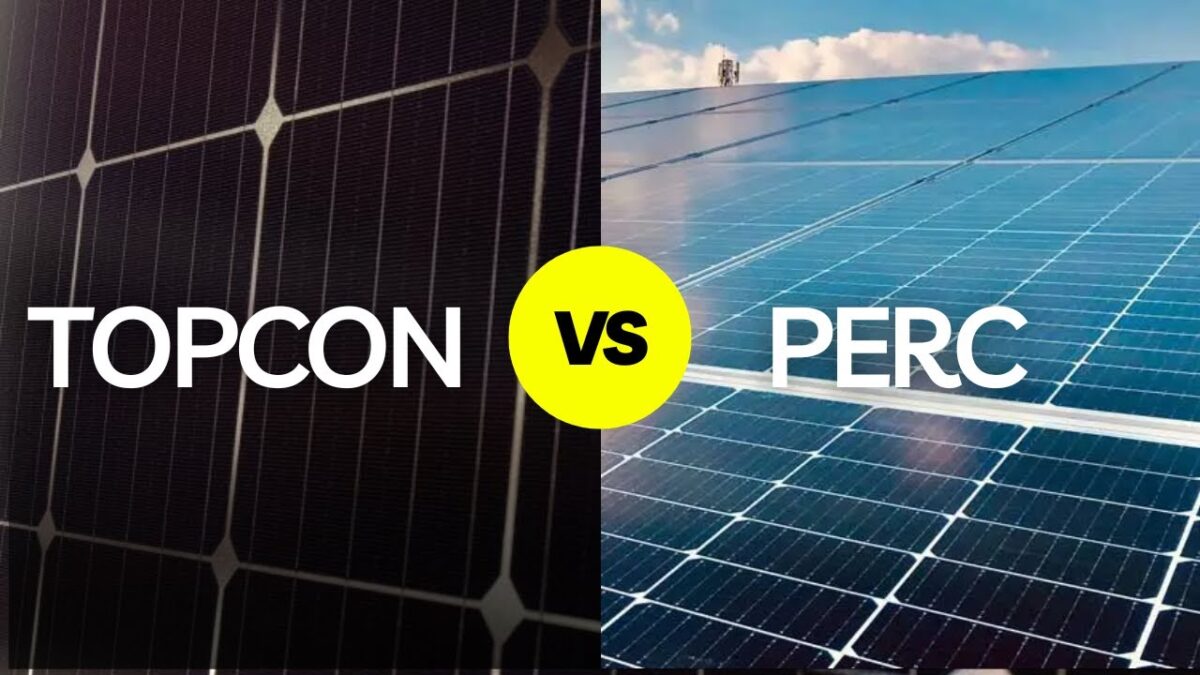Exploring the Contrasts: PERC vs. TOPCon Solar Cells in Photovoltaics

As the global demand for renewable energy rises, the solar industry continues to innovate, aiming to improve the efficiency and affordability of photovoltaic (PV) technologies. Among the leading advancements in this field are PERC (Passivated Emitter and Rear Cell) and TOPCon (Tunnel Oxide Passivated Contact) solar cells. Understanding the contrasts between these technologies is crucial for stakeholders in the solar industry, from manufacturers to consumers. This article delves into the key differences, advantages, and challenges of PERC and Topcon Solar Panel, providing a comprehensive overview of their roles in modern photovoltaics.
PERC Solar Cells: The Established Leader
1. Overview and Development
PERC technology, developed in the 1980s, has become the mainstream choice in the solar industry due to its relatively solar manufacturing process and significant efficiency improvements over standard solar cells. PERC cells add an extra layer of passivation on the rear side of the cell, which reduces electron recombination and enhances light absorption.
2. Structure and Working Principle
A PERC solar cell consists of the following layers:
- Front Surface Field (FSF): Reduces recombination at the front surface.
- Emitter: Doped to create an electric field that separates charge carriers.
- Base: The main body of the cell where electron-hole pairs are generated.
- Rear Passivation Layer: Typically made of aluminum oxide (Al2O3) or silicon nitride (SiNx), this layer reduces recombination and reflects unabsorbed light back into the cell.
- Rear Contacts: Allow for the collection of charge carriers without significantly blocking light.
The addition of the rear passivation layer and local rear contacts enhances the cell’s efficiency by reducing recombination and increasing light absorption.
3. Advantages
- Higher Efficiency: PERC cells typically offer a 1-2% efficiency increase over standard cells, reaching efficiencies of around 22-23%.
- Enhanced Performance in Low Light: The rear passivation layer helps PERC cells perform better in low-light conditions, making them suitable for a variety of environments.
- Ease of Integration: PERC technology can be integrated into existing manufacturing lines with minimal modifications, making it cost-effective for producers.
4. Challenges
- Degradation: PERC cells are susceptible to light and elevated temperature-induced degradation (LeTID), which can reduce their performance over time.
- Complexity in Manufacturing: While not overly complex, the addition of the rear passivation layer requires precise control, adding to manufacturing costs.
TOPCon Solar Cells: The Emerging Contender
1. Overview and Development
TOPCon technology, developed more recently, aims to push the boundaries of solar cell efficiency even further. It builds on the PERC structure by introducing a tunnel oxide layer and passivated contacts, which significantly reduce recombination losses and improve overall cell performance.
2. Structure and Working Principle
A TOPCon solar cell consists of the following layers:
- Front Surface Field (FSF): Similar to PERC cells, it reduces front surface recombination.
- Emitter and Base: Function similarly to those in PERC cells.
- Tunnel Oxide Layer: A very thin layer of silicon oxide (SiOx) that facilitates tunneling of charge carriers while providing excellent passivation.
- Passivated Contact Layer: Usually made of polycrystalline silicon (poly-Si), this layer further reduces recombination and improves charge carrier collection.
- Rear Contacts: Enable efficient charge extraction without significant light blocking.
The combination of the tunnel oxide and passivated contact layers significantly enhances the efficiency of TOPCon cells by minimizing recombination losses.
3. Advantages
- Higher Efficiency: TOPCon cells can achieve efficiencies of 24-25%, making them one of the most efficient commercially available technologies.
- Reduced Recombination: The tunnel oxide and passivated contacts significantly lower recombination, enhancing performance and longevity.
- Potential for Bifacial Applications: TOPCon cells are well-suited for bifacial modules, which can capture light from both sides, increasing overall energy yield.
4. Challenges
- Complex Manufacturing: The introduction of the tunnel oxide and passivated contact layers adds complexity to the manufacturing process, potentially increasing costs.
- Material and Process Requirements: Producing high-quality tunnel oxide and poly-Si layers requires precise control and high-purity materials, which can be challenging to scale.
Comparative Analysis
1. Efficiency and Performance
- PERC: Typically achieves efficiencies of 22-23%. Better performance in low-light conditions compared to standard cells.
- TOPCon: Reaches higher efficiencies of 24-25%. Superior performance due to reduced recombination losses.
2. Manufacturing Complexity
- PERC: Easier to integrate into existing production lines with minor modifications. Lower manufacturing complexity and cost.
- TOPCon: Requires more complex manufacturing processes and high-purity materials, potentially increasing costs.
3. Degradation and Longevity
- PERC: Susceptible to LeTID, which can reduce efficiency over time.
- TOPCon: Lower recombination losses and better passivation result in potentially longer lifespans and less degradation.
4. Cost and Scalability
- PERC: More cost-effective due to simpler manufacturing processes. Easier to scale with current technology.
- TOPCon: Higher initial costs due to complex manufacturing, but potentially lower levelized cost of electricity (LCOE) over the lifespan of the cell due to higher efficiency and durability.
Conclusion
Both PERC and TOPCon solar cells represent significant advancements in photovoltaic technology, each with its own set of advantages and challenges. PERC cells offer a proven, cost-effective solution with improved efficiency and performance over standard cells, making them a popular choice in the market. TOPCon cells, on the other hand, push the boundaries of efficiency and longevity, presenting a promising option for the future of solar energy, albeit with higher initial manufacturing complexity and costs.
As the solar industry continues to evolve, the choice between PERC and TOPCon technologies will depend on various factors, including cost considerations, performance requirements, and long-term sustainability goals. By understanding the contrasts between these technologies, stakeholders can make informed decisions to drive the adoption of renewable energy and contribute to a more sustainable future.






